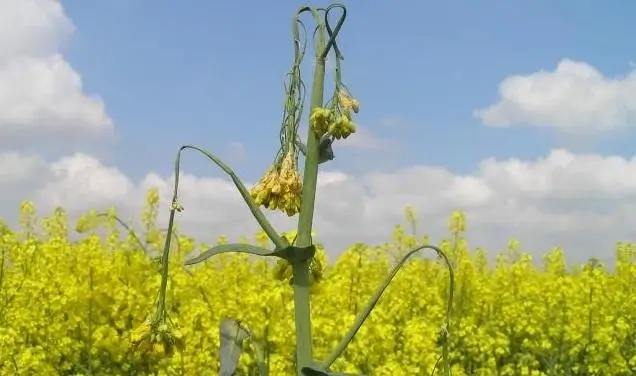- Aminoacids component – builder of all structural proteins and enzymes,
- Component of DNA and RNA,
- Component of external cell membranes (phospholipids). It participates in transport outside the cell,
- Component of internal membranes surrounding cellular organelles (phospholipids). It participates in intracellular transport,
- Component of Nucleotides (ATP and ADP), which are responsible for storing and transferring energy in cells,
- Component of nucleotides, which are transporting hydrogen and electron (NAD, NADP, FMN) in photosynthesis and respiration,
- It participates in the metabolism of fatty acids (included in acetyl-CoA),
- Component of chlorophyll and phytochromes,
- Excess of nitric nitrogen is accumulated in the vacuole, the composition is made available after cell decomposition,
- Component of signal transmission pathways between organs,
- Component of phytohormones (eg, cytokines, auxins) which are responsible for cell division and growth.
The role of macronutrients
Macroelements are elements that are taken by plants in relatively large quantities. They are crucial for crops because their proper content influences the correct development, quality and quantity of crops.
In addition, their deficits are associated with high risk of disease, which has a negative impact on the efficiency of agriculture. It is therefore important to avoid this situation and to ensure that the plants are properly stocked with all ingredients. The reliable method of delivering them is foliar feeding, which is effective not only during the current fertilization, but also when the first sign of deficiency is observed when the soil is too late.
The following macronutrients are present in plants:

NITROGEN
is the main yield-forming nutrient.
Symptoms of N deficiency
- Significantly inhibited growth of aboveground and underground parts of plants,
- Short and thin shoots, stems or growths,
- Stiff, slender plant appearance,
- Leaves or smaller organs are faster discarded (starting with the older ones),
- Weaker side shoot formation or rejection (reduced number of produced shoots, shoots or stems),
- Weaker flowering and tying of seeds or grain,
- Green or yellowing leaves, with strong and long-lasting deficiencies yellowish orange, orange, red color. The first symptoms on the oldest organs,
- Thin, slender, weak and chlorotic plants.

PHOSPHORUS
takes a vital role in all living organisms and is a particularly important nutrient for plants.
It plays a key role in the combustion processes occurring in the cells and in the full flow of energy in the plant. It is also a builder of cell walls, DNA and many types of proteins and enzymes.
Symptoms of P deficiency
- Strongly suppressed growth of aboveground and underground parts (initial deficiency, at the stage of extracting nutrients from the seeds, stimulates root growth into the soil),
- Short and thin shoots, stems or growths,
- Stiff, slender plant appearance,
- Leaves or smaller organs are faster discarded (starting with the older ones),
- Weaker side shoot formation or rejection (reduced number of produced shoots, shoots or stems),
- Weaker flowering and tying of seeds or grain,
- Mat, darker, cyan leaves, in some species – purple or violet, with strong deficiencies brown spots and dried leaves edges. The first symptoms on the oldest organs.

POTASSIUM
is one of the most important nutrients in the plant, which decides on the yield and quality of cultivated plants.
Potassium affects many important processes, namely:
- Increases plant tillering and stimulates the formation of new stems,
- Increases plant resistance to drought,
- Prevents yield drops in cloudy and cool summer,
- Increases the content of starch, protein, sugar, pectin, fat in plants,
- Improves the quality of potato tubers and root vegetables, tomatoes, cucumbers and lettuce,
- Increases plant resistance to disease and frost resistance,
- Takes an important role in opening and closing the stomatal apparatus,
- Is an activator of more than 50 enzymes,
- It takes a direct part in the nitrogen distribution of the plant,
- Transports nitrogen ions in xylene.
Symptoms of K deficiency
- Wilted appearance of the plant (cell turgid disorder),
- Darker, blue-green, matt leaves, devoid of glossy wax,
- Chlorosis between the veins of the leaves,
- Yellowing and then browning and drying of the edges or verticles of the leaves,
- Brown spots on the edges of leaves,
- Winding up of the leaves edged,
- Shortening of the internodes,
- Weak development of the root system,
- Poor growth of storage organs,
- Weaker flowering and tying of seeds or grain,
- Cereal stems weak, thin and slender,
- The bushy appearance of cereals – the main shoots decay, forming new – weaker.

CALCIUM
Calcium has a number of very important functions in the plant.
It’s a component of the cell walls, which decides their permeability, and also determines the firmness and durability of the plants. It is responsible for the structural stability of the tissues. It determines the tolerance of vegetables to external factors and stress. It activates enzymes, neutralizes organic acids, affects the growth and development of the roots. It takes a fundamental role in stabilizing pectins which form the central plate of the cell wall.
Symptoms of Ca deficiency
- Suppressed growth of aboveground and underground parts of plants,
- Inhibition of shoot vertice growth,
- Roots become mucous,
- Leaves deformation, young – twisted and bent, older – frayed,
- Brown spots on the leaves, sometimes brown leaves nerves,
- Dried tops of the leaves,
- In cereals cracking young leaves in their mid,
- In oilseed rape, young leaves change color from the tips to light green to gray, wrinkled leaf blade,
- In Solanaceae – so called, dry rot of tomatoes and peppers,
- In apples – so called bitterness of apples.

MAGNESIUM
is an essential nutrient for plants.
It is a builder of chlorophyll (green parts of the plant) and is therefore a key element in the process of photosynthesis. It has a significant effect on the synthesis, transport and storage of important plant components (carbohydrates, proteins and fats). It acts as an activator of phosphate-transferring enzymes in the respiration proces. Magnesium increases the absorption of phosphorus by the plant. Therefore, magnesium fertilization is one way to increase the use of phosphorus from soil and fertilizers. Together with calcium, it is also a component of water that affects its hardness.
Symptoms of Mg deficiency
- Wilted appearance of the plant (disturbance of water management of the plant),
- Streptococcus chlorosis along the leaves of cereals,
- Necrotic, streaky stains on cereal leaves, often with a purple hue,
- Dried older cereal leaves,
- Marbled chlorotic stains between the veins of older leaves of dicotyledonous plants,
- Over time, between the veins, necrotic brown spots develop,
- Symptoms of deficiency are more intense during long-lasting rainy weather as a result of magnesium rinsing from soil (on very light soils).

SULPHUR
fulfills many important functions in the plant.
As an enzyme component, it takes a particularly important role in processes such as photosynthesis and protein and fat synthesis. The poor nutrition of plants with sulphur results, among others: worse nitrogen absorption from the soil.
In addition, sulphur:
- It is important when shaping the original plant nutrients (affecting the taste and aroma of many arable crops such as mustard and garlic oils),
- It is a component of vitamin B1 (cereal grains, bean plants),
- It is essential for the formation of plant antibodies (phytoalexins, glutathione).
Symptoms of S deficiency
- Suppressed growth of aboveground and underground parts of plants,
- Short and thin shoots, stems or growths,
- Leaves or smaller organs are faster discarded (as opposed to nitrogen, the symptoms first appear in younger parts),
- Weaker side shoot formation or rejection (reduced number of formed buds, shoots or stems),
- Weaker flowering and tying of seeds or grain,
- Pale – green or yellow leaves. Regular chlorosis – all over the organs surface. Sometimes red veins of leaves,
- In cabbage and oliseed rape – marbled chlorosis of young leaves and rejection of the buds. Oilseed rape flowers are lighter, pale yellow, sometimes white.






















